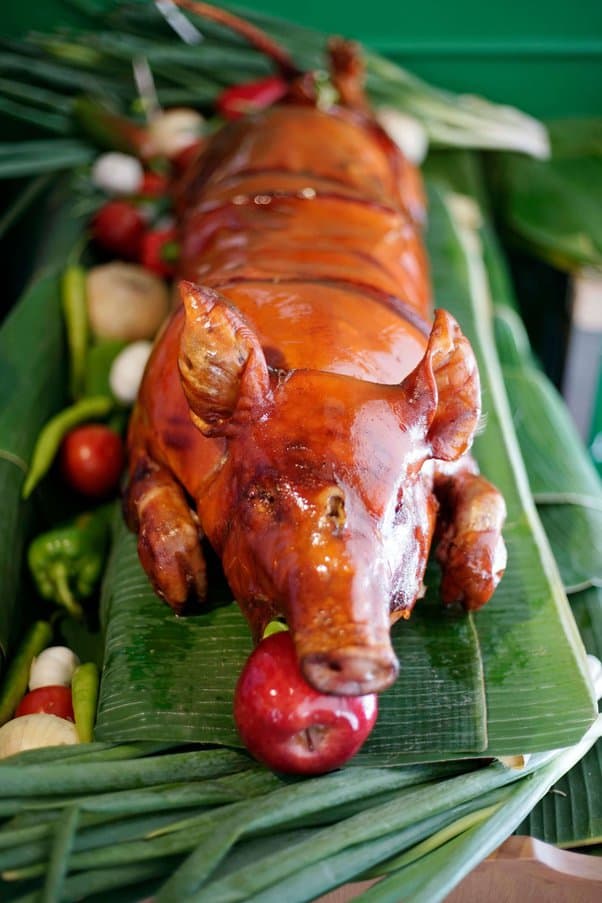
It may not seem like it, but the history of the beloved lechon has political and religious roots.
The name would suggest that lechon was adapted from the Spanish invaders who colonized the Philippines for over 300 years. Leche means “milk,” referencing the suckling swine that was roasted on a spit. The Spanish had a colorful dining culture and they used it to wield its power.
Spain was at the height of its power from the 16th to the 18th century. The empire displayed its influence by enforcing Catholicism on its subjects and expelling those who refused. To catch those who practiced errant religions, authorities organized village feasts armed with spectacles of food—overflowing paella, spiced fish, freshly roasted pigs. Then, they observed how locals consumed the food. Villagers who avoided shellfish were suspected as Jews while the ones who refused pork were judged as Moors. In those days, a shadow of doubt was enough to be persecuted.
When the Spaniards arrived in the Philippines in 1521, they noticed how the natives practiced a variety of belief systems, including Islam. Replicating their earlier success, the Spaniards used pork to control the clout of non-Catholic religions. The country already had pork dishes in their cuisine from the Chinese and other traders, but none on the scale of a whole pig. Eventually, these dishes acclimatized in the local gastronomy.
In an essay written by food writer-restaurateur-artist Claude Tayag, lechon became so entrenched in Filipino cuisine that the definition changed from the Spanish “milk” to “anything roasted over a charcoal pit. And even so, the immediate picture that comes to every Filipino’s mind is a full-grown, beautifully cooked porcine at the center of the buffet.
The lechon has become an integral symbol of Filipino food that some argue that it should be the national dish instead of the more ubiquitous adobo. It has, indeed, created a subculture. The municipality of Balayan even holds the annual Lechon Festival every June 24. Dedicated to St. John the Baptist and trademarked with its parade of costumed roasted pigs, it is typical of Philippine fiestas where the secular and religious meet.
The popularity of lechon spawned various styles (the stuffed Cebu version versus the sarsa-laden Manila one) as well as related enterprises, such as the aforementioned liver-based gravy.
Lechon is hardly the most affordable dish. Smaller pigs can fetch a couple of thousand pesos while a full-sized one can cost tens of thousands. Despite this, it is strangely democratic. No matter where you live or what your income is, there will always be a lechon, the crowning jewel of Philippine cuisine, during a birthday or a wedding or a grand anniversary.


Recent Comments